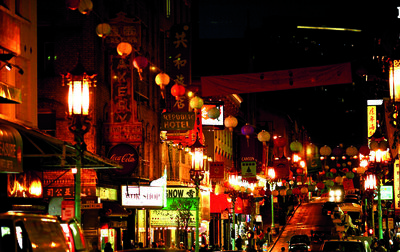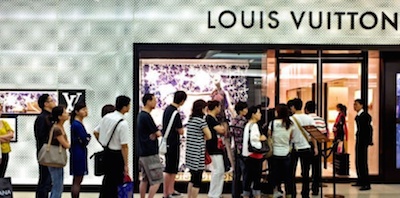In the next three years, 60 percent of high-net-worth Chinese consumers are likely to purchase investment real estate properties in the United States, especially in Los Angeles, San Francisco and Seattle.
According to the 2016 White Paper on China investment immigration from Hurun Institute, about 15 percent of financial investments from affluent Chinese consumers came from overseas. More than half of HNWI in China worry about the devaluation of their investments.
"That Chinese high net worths (defined as families with net assets of CNY 10m or more, or US$1.6m) are now looking to invest outside of china as a way of spreading their risk," said Rupert Hoogewerf, chairman and chief researcher of Hurun Report. "Buying a house and foreign currency deposits are the first choices.
"The US is the country of choice, for immigration and for investments, driven partly by the concern that the CNY will depreciate against the dollar," he said.
Chinese interests
Affluent Chinese individuals are most interested in overseas property within the U.S., focusing on the West Coast with Los Angeles, San Francisco and Seattle, Washington in the lead. Seattle has beaten out New York for the last two years for the top three spots of interest.

San Francisco Chinese New Year
The U.S., England and Canada are most likely to see a surge of immigrants from high-net-worth Chinese consumers. Australia, Singapore and Ireland are on the rise in becoming top desired locations from Chinese immigrants, making the top-ten list for the first time.
The main reasons for desired immigration from wealthy Chinese individuals are opportunities for self-employment, education and asset allocation needs. The top reason is self-employment opportunities at 43 percent. Cost of living and property as well as investment value and difficulty in obtaining immigration status are also major factors in searching for new locations.
Real estate is not the only investment of interest from affluent Chinese consumers, with many still interested in hobby investments such as paintings, at 24 percent, and watches, at 16 percent. Stamps, wine and vintage cars see interest as well, but each in the single digit percentage.
Interest in investment paintings from last year rose 33 percent, whereas wine dropped six percent.
International market
Another report saw international markets saw a 16 percent increase in Chinese outbound travelers, but closer to home, in Greater China, there was a 7 percent decline in tourism for the first half of 2016, according to the China Outboard Tourism Research Institute.
COTRI found that there were 64 million border crossings from Mainland China between January and June of 2016, resulting in a growth rate of 3.4 percent. Much of the luxury market relies on Chinese outbound travelers who visit brand stores and duty free shops to make high-end purchases as a method to avoid the high tax at home (see more).

Chinese tourists lined up at Louis Vuitton
Luxury brands should also consider offering discounts or offers on their best products to provide an entry point for consumers to experience them firsthand, according to the co-founder of Dealmoon.
Chinese shopping recommendation site Dealmoon has become the largest distributor for a number of luxury brands in the United States, as it feeds Chinese Americans’ demand for high-end goods. While discounting is often looked at negatively, the executive pointed to deals as a prime provocation for shoppers to put a brand’s product in their cart for the first time (see more).
"The US is pulling away from the rest of the world when it comes to preferred destinations to park ones families or money," Mr. Hoogewerf said. "Canadian cities dropped down the list, Australian cities stayed static, and there was zero advance from European cities.
{"ct":"FIpKpDMY0IlEgiatzvCTT3P3jZAvOW6lq9jHXaURsmW9rPnT9m\/l8+VP\/yI7Ulc0mK0TciykQLWTb6Y+m6f663LToDzA8Z+m3i95bufYQhqV18OoUgav7poUr9KSw\/SrIYL0IX+HKysEullxOMQO5j7sngmGp6+v4Prigzh2FABUJTgLNtB3ZqeoE1zfupqAAhXJZgs9ZzK+wigoein8WbRo+sk0ZDqyTO5zTymokMKMwuhM77QjLzSs7fm75YJ3OCcHgNzmFRkN4NZpXTRRuc766fbIrXpGNPI4\/S8HffLHM3Mkv6+msrhdBOXA3lNGRS+ZLw6RB1NLHBmv3Ik4eRwWfe6XMb3xDCVY9RWgIXuab6uISxoZGF3u8iGgTQbbv1uy\/W9O2vLpEE0+NoL6bfGEP4hJhXch6CYC\/X2Sgj7eAji\/nDAFh1Yo9cNivhwS+6wRR8NQ7NYgFGR418mZYX21z29U3d14kF0hRVbsCe243YXjQyF9S\/U9YTUODX9wfY8ZSQv6Ya7m3oBGaucU1mYSp43j7PDlg1Uc9F2yWOlZhbRD15qQVJI0M7yAHcV7iNdIRcqiqYjHUfWTTJyJ+CV+A5Fj1yL8fqo\/FMMfxeiaj0E+vnxJm6spY3HQ2OwUC9tgbg2RDUbp0BqxJdDe1jh\/FxqRjdxZdrXivo3hFQxx4osk1YqC5cYRvPrm6C69F8PRcku\/fYQtFNPHlj6r36CY\/ntmFLTK0e8MrjwMs0qG7VgA5B942j41TbMvmbYckfLBOL44vt1+norweI2iB5H1qhab8CZcr1X5c+rXmpsTpt+Qh0kkWLgiP9LyimMiOhg39Q+pZe54msRd9lf9ej8Rx\/07LT\/wMsQi15088yLrwW5vylr6wC1QfskRNtHvM7+NGUDZDCvZIVv0ijzJu0c\/BnHIn0KclzCdSkPG7L8GXHle2LOcT4wCDh\/YJqgiq2pcIi\/Jl1\/XLOhg+A9BmtUex8duVUrJ2XAEgwwk9Ey3PX6tw\/9b5ZpU2\/yp5BACtMPMGgrafxGsUR4tKU3cducWKYhcnT3jKnaVJDDsoSTYL\/QpILWhl1W2FgBPPvIUh+PqGHVG2E4t8iKkPPQQB0iZHboOXt3loYGwktupPVk9otNqFdLBPznmn97kg73kT7Hs5jZEGK9iEui\/sF1zNJayGDq6yARGiPxunevNXPmrfW5nrAzqT3eapwudqYrtyi\/sM5NYCplWz0Kj7liWLuQ8K8BElNH0TE8P9ASdnVcitC0RFJSSjHFiur4Th5d15yG6KwbehNN7JHobWnf9YC2f8ShnqKkcl4OBC+RYvPjEGX0TljJkPKjBl1fkkXMtgQ5VrTwq+XAuhI6KvTeuUctXdvqi4+JFiKPzYbez5zX76xieolfHo1m4E3Oc0OYVIFwcmKmPDxaQ7pHW3qy6zjORpGqJZcBVgvDlPaT5+cDx72avmgS75GtU63G9J\/YWvgIdTQsQ6BhwBGZpkANsLuvMOybInLa8wN5Tz8OXZK0pOZX0mAI9D+HdtM6pb1HJmex8D386saL6yqWXdunewLfeQD+bvQQqbAYrHSy7poEv3De0ig0GR+CHCdfX0DV44\/5KqCLpXhq7knGAmGNmqzpK5Wev\/aU6zL5xnZcd\/i53WYkSJSyrYlLrubgeSQzU8gHLQfDuhbIe82y3v+4oq03vs\/wzcvMYPeFi7E5arvjGl84UegXmfqV4Humw9OXxS6LNxXrS8NsOqSZsiFyU94gxDdstr8Vwg9DO+lac98dBVVGzy7Vxk6zx1vznQZigXSHQOzRwC+1aNAlDbPh\/q+bNuI+yS4oOH2slvyxmPeiI6YG5dnuSTYcNZ8Rui\/WCYiMGNA62uedDldXDQ1M56O9vUYUkykkx4eNy2PnrIwdEyRQ9xNyY03wmt7uRTS2fmdVnZMrRh1aO9C32ICimlv3xbLvIDCxEe9MebYwDuIjQSTuZNG3u035rJbxWsNr\/mwz1xS3NYStpgWR274bfidPgwZP73DAD2U6ey71f8BEGgCwJ7Qaqh1LhxF2Sf7q+B2zmywHUZuJMvy8Jas7blRSdkPydoveYk2DxpOZu04sJjBxz1cLzSVO4tNWiiO3tX+VmjywCfPaC9OeoG6Ccu3TNKnLJFLZ2+GZxYoe9iHdoDQ0lYWApfLvj62zZhfh9y65NNGLtn7wqPcgfZldDCjHMw49g0mfoFf6ZZo0zbvfzLJlVYXt5mT5sysofRKWR7r9CjBuJch\/bIVtjUspYzAZoSHlYA+kisaAcExzbkYMgkO7aZByWO9F0QA0glRJAaf9nj5C270zmLyqxGIoEYl7PYNxkwkdt+MBIXotXB9rVr5NyTX7vhpx+GTelJicMJChZk\/N9akh6SWnse\/BeaSdWuNEU5HgsHh3Toe9HuvgB8bk62UPR8uSsi5m8knUpgFuF9mgsuNiI+2JCQmtqgyeR3TU5vn248n9W07RS9cqaeLCpXXmX35lXMVMiGpHA+XG4luHL+tMN416NoUmGtJd1shTO\/hbhE6u\/tvdtyaof3Wh33XgT37zy6yj6MQREhwMPaiOMjpTz1ZHYDSKDUatLhZX2pf0oSJttAhwel5qokOmmEJgBVomaXiWxWdYi\/jBDV0\/w++NSqybZXNykUcR6IS1Nay+XGwSD\/EsufMhtzr2QL3XlfMwsLmVN+jLc485RkEaJrmDrX0fm43wXZB2HVev4jdvCD46dWt5mWGT190oklTQV\/q2Ilnn0vjZcky7klgLZLuDyVsMpLsPXS1TfSRdYso5yS9SoLmscwUGwUP1jEBD0hC9RVc\/9CDQjTFoxBjXXdXeAgqKpNB7ek\/tndqBA9uj4j3PuYHspbPZKklEtyIU5woHWeEmGk6voU0iJKpj11ulgwiO\/Am+sYtu4Sp+q+W26BqLXC2XjuiskULjIv6Q8gHToM+RoRSqE22FZ4A3gP6S5gtMNHWKF1vDP6v2oJGogk3Z3jtHkSCejPNdKvw1h\/GkJQlpeXLb2jFRGihRIyMRYHcdYT2UySrEJ8ynXjybcbQbBETWsWB5p\/CUfenyYeFk4rXef9tLYD\/ti0HU9r1+3cSIUu4Ow3ksuw4Gv2FeNn\/dpgAw2eEAsSW48nmX4T+w9xxoovRb2JSU48LE4ZnFVW1GxrVQI\/14N2li4BOR48VMlY+650+3qWVYEOtf1Rse9ob9fW7DpuXp\/tbQEp8agyuPTZKK\/SaiNipeu3ZsfVCPcMR9ogrh9UWFu7KGVBYNX7GQ3VNDiRZgKdtLpmFAobfxXRvbmLg6rvoZZkblzjpwTjOxdtfsXaf06IVlJB2a57F2Dj0AwZr62t7FPWqoBFoGHuBUKhgkIurlMvcI6n6pcyNa2+20jwgDG6ZtdtX8\/SLSJG22I\/so8wnFdutFN+BeYyW+EEN9IxV5s2cyjLkO7OqzvgmzquLDoXfQtiTg6zZaffbnGsbY0duKA7gWiz1eeGmYvpdeJogpd2xIBSSGDOOvZ4IY9yOmZeXj0XQEObJNSQR08oJ0+ObxEtEzfP2PqukJ0je5hguL1qmj7AOCK67HEFgadLfGV3hxtBv4Ofr8xx+ROO0VeU9oC4bBEl93f0SmipykZLyJ7\/zOo3ZW85aVc+4CToqriaY5zGcLDsZQCbU0U0WW5YNebXsgzz2DDAUCV4XetgLx+KoQLqqRSEm3OXXyiLywlq\/KF1Xz792KIQ+\/KqwxAITHshtA\/CSnhu\/+84AoCie4Gx+ZOccsdiUdS+cbBkAf+YoXWS6tsa1feECWPkTBOpawAjCzwL3SnICQGcBXMkIG\/Pbt7LJ3V50S5FKTak3+AMAO6nUz7cHIqtbUhO82flTjRXWWca\/60JdF14AYmrp7lIDOEEc7z0rxH5RCxj6JfKVMnq+cnS8DzABMB2x+OkDRlnpp8eNxV9agzg5uhI\/jQjXZiebxwYng0VkFDJduFeuB7xT7JEQJzCwlkLWR3Dj4h73j0P5yC95\/7P0gEw07C9gidaZmMzUMhPohGReaHQXYM67ChfNs3dAD2f2PP66v\/bIoXy\/a3zODoEnmrU+MYdJ751fs+lh3Wc6xwA2g0qNxQlK\/5Hxx1pPBfSS2OcU97UkPh9LCW8DeF5gtKcCrQs0ggmHuWx\/BFNMCfX0I\/pG25jeezSQnHfc+IWC8uOt\/G0fR9VkV\/S9RLFWDhpC+UMlR\/vy6WA2VguVfsvYcew9qWO2w54AAxFzfAzGKVBThBbiINr\/wU+0NsORD1VCUIjaeeHa1aBZY7JxTBd8kn6RcKnRAPucZRpUrmYtkiKiA1xof7PBIp7P6t09fzcIHlRVQc8yvdR8AUEpPUN4JkFBtOXnKMG01DQmqff7jkmdwIAmbXFmMFGAU+f5I1K8Ifq\/Iaf\/9Y4kY3jgBeh+VyUG5VmmdQQpxawLT\/4UXry1lOVHZzrBuoOMUxhmY8TpgEpGnTi7Z2AnyRm1RAsMVXLPdK5nGGjfDd0Nee5ZE7B9wQQNA+VQCTCevFnBhinUoCRBDvv9+s3d2ziAQgD0qrJ3R+DqpvEgeW02RkRShBSAtcapUsY4jt1oRQOp3HkOLgNTspKn+Lwp8kJTnLNt7cMy6ajboQw6pCspkRIuhzaehK3RrhwOjrxoYuYF+AUTfxTEupEHLIoXP8da2wrrR14MzLPERLmeUjmZ8YJI6mB79DC1tZOutRIEOdfZAWRR00IXMDImN\/81Xgjp6cIVO0UBSSYiZdSq8WxSeq6tmCMCIiMDLRSqzAKmSIiiEVUjOV6jMQgNyEQzLAoA3A6gjN8cEc+GHyq6GRPXShMqmPKL8PGo3hi5TMr9y1djcDCF6xhmBbgfiSobifY05VDLWsd7wvcRT0UmLkE8ClZ2zRpeIk7pF+MyWLCTMdbS8rRwB37UMfcnJCppUNAvHU4XQYAqeIa0Gmwu+YjPb3JxTJwYr2HAUGmXtaAnZ7p+6qhKxg4iyiLaNzJ0b3jG9mGwSOGM5nujRJdBezT8NvZtQ8JK0Vsl\/LPUDVq3KCHFHKKB+5HsLHWL0tMMpmLKCRpl4MIIREkHl8QMwfwphn1qPu2hIVSigF7p9omwbtFNjh0lgLHQAtdWtFleLic72VxiqEtI4W3ETV7PcyymGcjwv0UwDcTRSMDVT4u5W2fjG9hZYE9g4GYbY4CQKaTeiVKMsif9j7YZtC6yp2Al+cgESLDP2O\/20RbjT5dcI1gu+J34n48RefKLS0OlY+WZ7NVNPs2nqkr7i+TjAEvDFIgGh39olBMLjmwXrKySP4hZ0U91JV4YBYeFjFc6ETIEwjCtJFvgaS9\/keUI9rG0b010ZsaUs2toSzA2OTUXzRlUOwFII39wfjrwFSFwU836ibfUkhln5hLABKO25VKI8oWrWjqQZ706r1OnblYlsVwzBvYhgQ9qaFRX8GYVxZOf1l79IN0bT6OLkJNebpwvvwpuQqyZ4o5IjvaCWYRYAnVIJsiwgVQhsQXxBg4icI1uIbqzTBj2t48bTJnEoIDl1U6oqFQY9pAapzkon9v8jqMwaJCoe6C4M93lAy4G4g1epe5ISAfiQ4m7+d9sUakBfaWl3F5xPXseiRCn1SDYD+sQukXbco5vevhJCo+JKsEc6G1dVw2PzYudwOYfUmsPpDPNA5KcS4j9OsyBC0hTqopXhARW9b85UmIoeuoa+j7GYF8ccSGP+3VM+vpJVGpjY7Xy802KKIyZ6N8eTYMfreUKZ8Ujz6dDfBSC4ynEoWp3JekgRb7On6xSh80xEd\/uHSnkTfq6OrBmx2nU2udBqPmni5a04+tdmriI+JJ4+4D6cXeJaVwiEtO9Zxz\/eIiX9Bm8sxp2dPyex0M35axr\/6LjPrjbzWIEM40tX+h0jhrOV51c5w6ntgPwyyz8Nd1t9Ru06o5VQLYmjO10MacmIjfVMkTGlGufOsAxBeC+RaSZUS45WO2epAwxyf99nNExoBgKJbkyfbgLF3eeOYyKPaI7Fl2M4tDi6yprfB4lOcb2lPHCqiQsQ\/5Ih24YnFBvLg2+cCQJ92agULE55xn26OIjW\/ue7pTzxPKUJXys1VuCEBliDC6WOpS\/vPEMgeKzrn\/0AdOMVkaCe107o6Ur5TSfsm+o\/mNRYvbq32rnT4XdAVXNvfrIW6gPhnU1FmnIzfSyjpmDxF\/LwHeFxX+1r7E2LhDtt2VCRBGFwkDEcyb\/AdaIKABck\/H1pZUlNSxDUtjq6NTWZJxOdY7Gl2G6oR+CslvZzmMPOsClIjPBgKi8P38fpVaJhtQi8LxyjkJassudCYw0mmYo2+dH6vzRhrlhm1OZxQDqX67yGtyhgzWvmc1eXUFDMWhCmvPMlJ2YxSkkvOJ66aW2v9FR9eI3mnWeDaUXwlAd8k0QYLbu2O+ZxbrzM+iBRHA1FVr68pIJSlDsl2MQAsE9TGXJCtqSZGexoY6AHIldCdjKAvskBDDyqZLM4uH8DnCQ57a1nGSn2+EAgYNxz42ASbaX8TFYyrGAPWoJj7z9mg3RyY4T3vUw2D+UwFTcOpzk4JaUJ6+11YIVBwyPmAhSgKxD8MUcnKxwia3P8jOCMbwzzgz5F42UUzba1a8XenL+ytZq\/zsilpthx1vs\/zp5j3FjIAaYge7rvun5IxSH15SZGfNpyOj2\/fdmnjmD9MG7e4BzGDWeG0N9wVcWLALPiUr+3NdJFA15vY4sWRQmhfx0MVRsSKiPVjnWtJi7ZQZXdraRTUQEzIEo6YNpKCVnu4MjGol2WhtnqqLrbwpcxaZuMLJr5D0BPviCmz3Fh89vn2bbyBm+kxO2dZ6HMtCC2EUHryyD3bLLRLdwrBo4VXer4QfUwvAf64ow0+HTHyZ+9PHqniwr63gSLDPX58DckarlQCWT5wHcgHRcpyplrPO8\/X3iEN4jM=","iv":"92ab5ba240be68c4fb69c65fe8b3d1ca","s":"d59fe57dae583ccd"}

 Cyprus second citizenship investment real estate
Cyprus second citizenship investment real estate